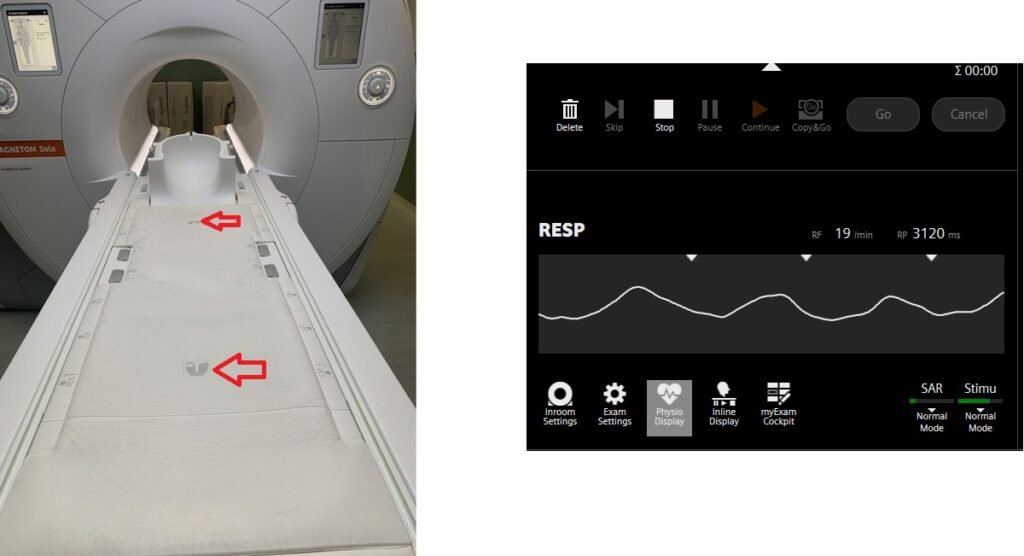BioMatrix Sensor( Respiratory and Cardiac Beat Sensor)
BioMatrix Sensor
BioMatrix technology, developed by Siemens Healthineers, is a set of advanced features and techniques designed to personalize and optimize the MRI examination process based on the unique anatomy and physiological characteristics of individual patients. It aims to enhance patient comfort, improve image quality, and increase efficiency during MRI scans.
The BioMatrix sensor integrated into an MRI scanner could offer several potential functionalities:
Physiological Monitoring: The sensor could monitor various physiological indicators, such as heart rate, respiration rate, and motion. This data could be employed to synchronize image capture with the patient’s physiological rhythm, thereby minimizing motion artifacts and enhancing image quality.
Respiratory Synchronization and Monitoring: The sensor could play a role in accurately synchronizing or monitoring the patient’s respiratory cycle. This precision could result in more precise imaging of organs that are in motion, such as the heart or lungs.
BioMatrixTable sensors
Modern-generation MRI scanners are equipped with integrated BioMatrix sensors within their tables. These sensors can identify the respiratory waveform and initiate data collection precisely during the exhalation stage of the respiratory cycle. This is achieved through a sensor embedded in the spine coil, generating a minute magnetic field to capture the patient’s respiratory pattern. Ensuring precise alignment of the patient over the sensor is crucial to guarantee dependable respiratory gating. This approach eliminates the need for external respiratory gating equipment, such as sensors and belts.

BioMatrix cardiac beat sensor
The BioMatrix Beat Sensor revolutionizes the paradigm of cardiac MRI assessments, eradicating the conventional dependence on ECG electrodes. Within conventional cardiac MRI protocols, the complex processes of attaching ECG electrodes, waiting for dependable trigger signals, and ensuring patient preparedness can extensively consume time and introduce interruptions to the smooth flow of operations. The BioMatrix Beat Sensor adeptly overcomes these challenges. Its integration involves strategically situating the sensor directly above the heart within the coil. This initial positioning is succeeded by a simple calibration step, carried out either during breath-holding or natural breathing. This calibration procedure precisely tunes the sensor, guaranteeing accurate physiological triggering.
References
- Samsula, Bianca. “BioMatrix Beat Sensor – The Technologist’s Perspective.” MAGNETOM Flash, vol. 83, no. 1, 2023. ZEMODI, Zentrum für moderne Diagnostik, Bremen, Germany.


